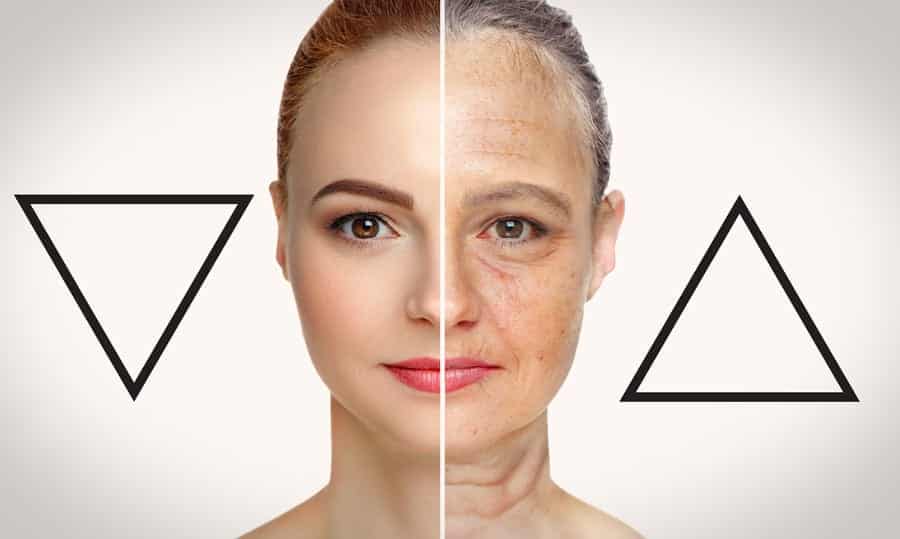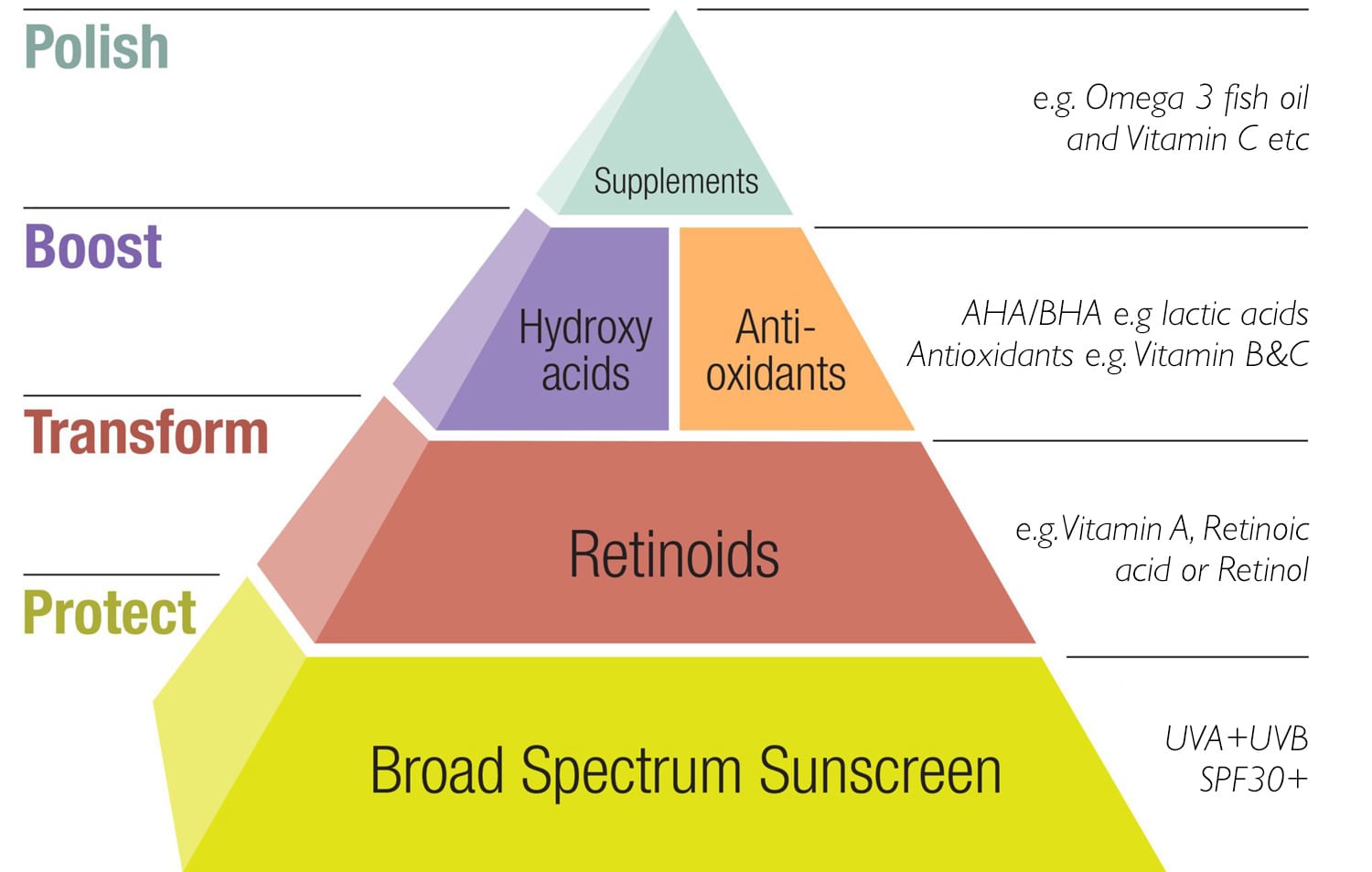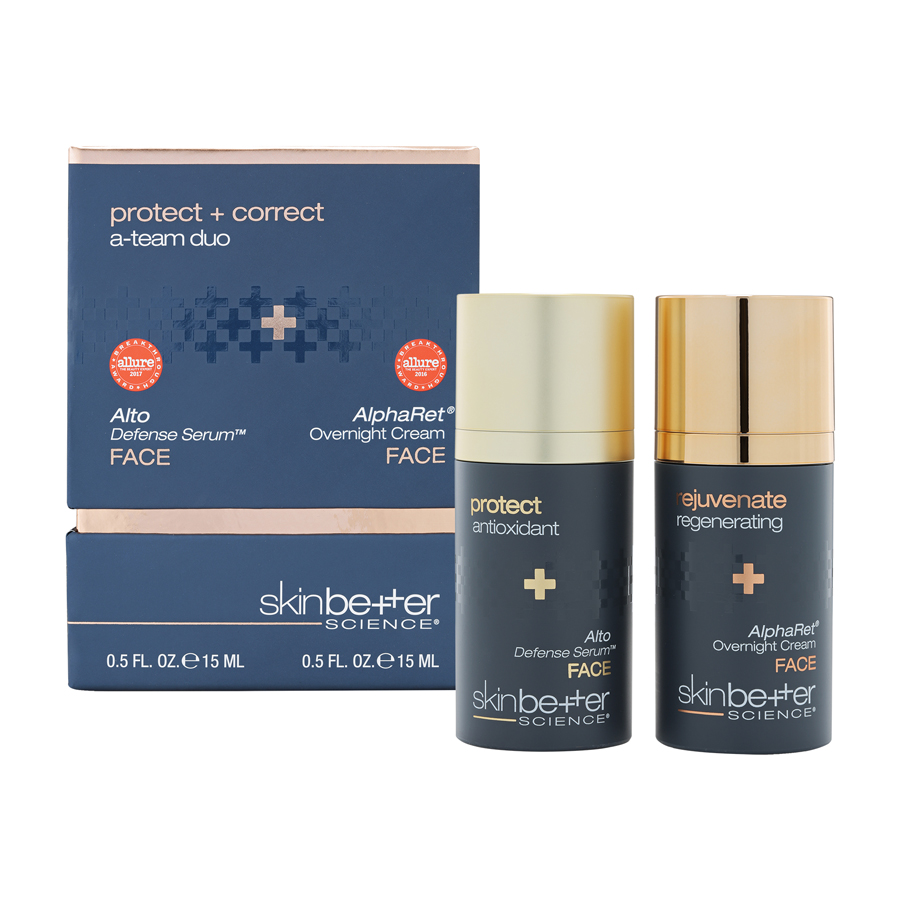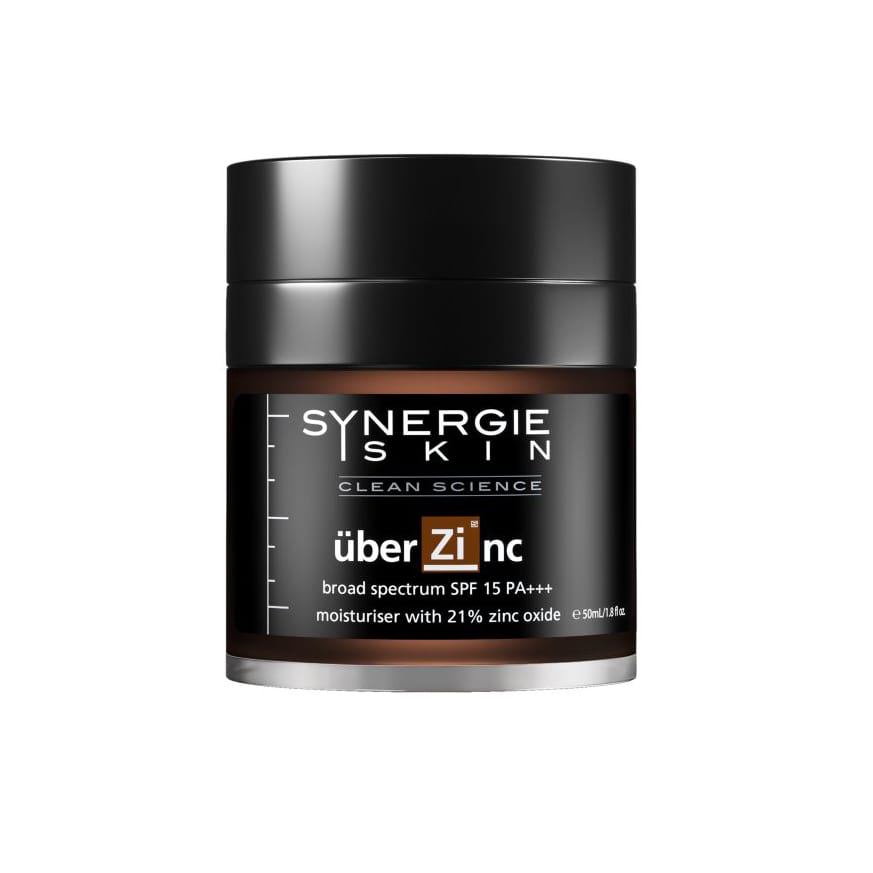Ageing is a natural process, it happens to everyone and no one can ‘stop’ it. But there are a great many things we can do to dramatically slow down many of the visual signs of ageing – and in that way ‘defy’ it!
I have included some education pages on my site because I believe it is helpful for clients to understand what happens to our faces as we age. This in turn helps us all to understand how and why informed skin care, healthy living and the magic of cosmetic therapies can together delay the signs of ageing and rejuvenate your appearance.
Recently popular sayings like ‘40 is the new 30’ and ‘70 is the new 50’ are no coincidence – they just reflect our improved understanding of facial ageing and some amazing medical discoveries and improved application techniques.
Facial anatomy
Facial ageing reflects the dynamic, cumulative effects of time on the skin, soft tissues and deep bony components of the face. It involves a complex synergy of textural changes to the skin and loss of facial volume.
Many of the facial signs of aging reflect the combined effects of gravity, progressive bone resorption and decreased tissue elasticity. These create a loss of facial fat in some areas (cheeks and temples) and the gaining of extra fat in others (underneath the chin and jowls).
Bone
As we age, there is a reduction in facial height (which is mainly due to changes in the underlying bone of the cheek and the mouth) and an increase in facial width and depth. The eye sockets increase in size, whereas the cheek decreases in size. This leads to accentuation of the nasolabial fold (that tell-tale line from each nostrils to the corners of your mouth).
The bones underlying the mouth also retrude (move back) and this leads to a loss of support in the upper lip, which contributes to the upper lip lines.
Fat
The youthful face has an even distribution of superficial and deep fat, which gives a well-rounded 3-D topography of gentle curvature. As we age, fat is progressively lost from areas such as the cheeks and the temples.
Skin
Multiple changes occur to our facial skin over time and these changes are mainly due to sun damage, damage to our DNA and hormonal imbalances. Other environmental factors that affect facial appearance include pollution, smoking, mental stress, diet, work habits, drug abuse and disease.
Midface:
Perceptions of facial attractiveness are largely founded on the synergy of the eyes, nose, lips and cheek bones (central facial triangle). For aesthetic purposes, this area should be considered from a 3-dimensional rather than a 2-dimensional perspective. Restoration of a youthful 3-dimensional facial topography is usually the primary goal in facial rejuvenation.
Recent years have seen a significant increase in the number of nonsurgical procedures performed for facial rejuvenation. Patients seeking alternatives to cosmetic surgery include those who want to restore lost facial volume, those who wish to enhance normal facial features and those who want to correct facial asymmetry.
Nonsurgical treatment options offer the advantage of an immediate cosmetic result and a short recovery time.

Over time our faces go from an inverted triangle to an upright one.
This incredible video shows the effects.

Shown here are the areas that are affected.
Skincare
The most significant thing we can do to retain youthful skin is USE SUNSCREEN! Rain or shine. Never go out without it on. Even in winter and especially in NZ.
Sunscreen filters out the damaging, skin-ageing UV rays. UV light is broken down to UVA, UVB and UVC. A and B are both present all year round although UVB (burning rays) are more prevalent in the summer and are their highest intensity between 10-2pm. UVA penetrates the deeper dermis of the skin causing greater structural damage. Both UVA and UVB cause photo-damage to the skin and are responsible for pigmentation spots, skin cancer, premature ageing and sunburn. UVC is supposedly filtered out by the ozone layer (but we all know the ozone layer isn’t working the way it used to!)
Remedies
Brown spots and pigmentation are notoriously difficult to treat. Whitening agents have very little effect. But you can nip them in the bud with a chemical peel or a laser (which is also the best treatment for visible blood vessels on the face). Microdermabrasions (chemical peels) can also get rid of small imperfections and keep that ‘youthful glow’ a few years longer.
Some experts say it’s never too soon to go after those lines and wrinkles with muscle relaxers. One argument for having these treatments early is that you need very little to get a very good result, plus there is increasing evidence that you can actually stop things from getting worse and maintain a youthful appearance.
At any age, the best way to optimise results and ensure safety is to seek treatment with a qualified medical professional.
The youthful skin pyramid

Serum … easy as ABC …
.
Vitamin A
What is retinol?
Retinol is a type of retinoid, from the family of chemical compounds related to vitamin A. Other retinoids include retinoic acid (also known as tretinoin), retinyl palmitate and retinaldehyde, all of which can be found in skincare products. Tretinoin is the active ingredient in ReTrieve1 the prescription acne cream, while adapalene (another retinoid) is the active ingredient in Differin Gel2. As well as being a trusted treatment for acne, retinol is famous for its antiaging properties and appears in a range of anti-wrinkle and skin-brightening products.
What does it do?
When retinol and other retinoids come into contact with skin, enzymes in the body convert the retinol into retinoic acid, the active form of the vitamin. This goes to work on skin cells in a variety of helpful ways. Retinoic acid works to increase cell turnover, stimulate collagen and elastin production, fade hyperpigmentation and help skin stay hydrated and glowing – without irritation. Thanks to all this healthy turnover, retinol can treat and prevent everything from stubborn cystic acne and eczema to sun-induced wrinkles and dark spots.
Regardless of your specific reason for using a retinoid, all of the benefits will be apparent. You may reap some of the wrinkle-fighting benefits from a product designed to treat acne, and vice-versa.
Retinol is a powerful multi-tasker. Vitamin A can help increase the appearance of firmness, diminish the look of fine lines and wrinkles, significantly improve uneven skin tone and smooth and refine the surface of skin.
Are all retinol products equal?
Many claim retinol is the only proven anti-ageing ingredient. It exfoliates, aids the production of collagen and fights ‘free radicals.’ Even so, retinols don’t work equally as well on everyone – and shouldn’t be used if you suffer from rosacea, eczema, or psoriasis.
Selecting the right brand is critical. Some brands rely far too heavily on the fact that retinol is included rather than on the form it comes in or how effective it is. Cosmeceutical retinols have around ten times more retinol content than prescription retinol – which gives you some idea of how critical formulation is. But there’s a lot more to consider than just the percentage of retinol. Molecular weight (which brands don’t have to disclose on packaging) is a massive factor, as is how often you use your chosen product.
You should not apply retinoids during the day. Retinol breaks down in sunlight (which is why most retinol products are held in opaque packaging). Exposure to UV light renders the product less active and therefore less beneficial.
What skin types is it suitable for?
While retinol is suitable for most people, different strengths are advisable for different skin types.
Some retinoids are harsher than others. Pure retinoic acid applied directly to the skin can cause irritation. If you’ve got sensitive skin, retinol is a milder, yet equally effective, alternative. The important thing is to find a formula that is both gentle and effective. That’s why it is important to engage a professional to advise you, based on your health and skin type.
Skincare
Retinol can be damaging if your skin is sensitive. It can increase inflammation and cause eczema, rosacea and peeling. Retinol can be quite drying, so those with dry or dehydrated skin should seal the product in with a moisturiser at the very least.
Retinol can cause redness, dryness and even flaking – but this can be avoided or minimised by gradually introducing the ingredient into your skincare regime and building a tolerance to the ingredient. For best results, wait at least 30 minutes before applying other skincare products and limit initial use to once or twice a week, gradually increasing frequency as tolerance improves.
Do retinoids thin the skin?
No. Retinol actually thickens the skin, increasing cell turnover and collagen production for thicker, more youthful skin.
What age should someone start using retinol?
There’s no set age to start, but most dermatologists advise introducing the product in your mid-twenties, particularly if you suffer from breakouts or pigmentation.
Enzymes in the body covert retinol to retinoid acid, an active form of vitamin A. This increases cell turnover, stimulates collagen and elastin production. It is appropriate for treating everything from pigmentation, cystic acne and wrinkles. There is also research to support that it clarifies and evens skin tone. In many ways it is considered the miracle ingredient, but it is important to note that, if used improperly, retinol can compromise the epidermal barrier.
Retinol, Retin-A and Retinoid – are they that same thing?
Retin-A or ReTreive1 is a prescription level retinoid that is stronger in nature. It is used for acne as well as anti-aging.
Retinol is the over-the-counter version of Retin-A, which becomes the active Retinoic Acid when it meets the skin.
Retinoids are the family that Retin-A, Retinol & Retinoic Acid belong to and a chemical compound of Vitamin A.
Can Retinol can be used with acids?
No. Benzoyl peroxide, AHA’s and BHA’s are known to reduce productivity within retinoids, so do not mix them. These will also compromise the skin, as both acids and retinol can cause irritation.
Footnotes:
1. ReTrieve Cream (Tretinoin 0.5mg/gm) is a Prescription Medicine for the treatment of certain forms of acne and dry, sun-damaged skin. It contains tretinoin which is the acid form of Vitamin A. It works by regulating the growth and regeneration of the outer layer of the skin. This makes the surface layer of the skin thinner and pores less likely to become blocked, reducing the occurrence of whiteheads, blackheads and pimples. ReTrieve Cream has risks and benefits. Further product information can be obtained at https://www.medsafe.govt.nz/Consumers/CMI/r/retrieve.pdfAsk your doctor if ReTrieve Cream is right for you. Always use strictly as directed. If symptoms persist or if you have side effects see your doctor, or pharmacist. Normal doctor’s fees and pharmacy charges apply. iNova Pharmaceuticals (NewZealand) Ltd, Auckland
2. Differin Gel has risks and benefits. Further product information can be obtained at https://www.medsafe.govt.nz/Consumers/CMI/d/DifferinGel.htm
Ask your doctor if Differin Gel is right for you. Always use strictly as directed. If symptoms persist or if you have side effects see your doctor, or pharmacist. Normal doctor’s fees and pharmacy charges apply. Galderma Australia Pty Ltd Distributed by Pharmact Retaling T/A Healthcare Logistics, Auckland
.
Vitamin B3 – Niacinamide
There are so many benefits of B3!
- It boosts the immunity of your skin
There are cells in your skin known as Langerhans cells. They are responsible for the protection and repair mechanisms of your skin. These cells are ‘shy.’ When you expose your skin to the sun (especially when you burn your skin) they temporarily retreat leaving your skin without its natural immunity against invading microbes or the usual safeguards against the activity of precancerous lesions.
- Improves epidermal barrier performance
Everything about your skin is better when the epidermal lipid barrier is functioning at its peak. Your lipid barrier helps retain moisture, keeps it hydrated for longer and will protect your skin from the harshness of the environment, regardless of the time of year. Niacinamide increases the production of ceramides (an essential component of your lipid barrier), keeping the skin strong and preventing Trans Epidermal Water Loss (TEWL).
- Retards redness and blotchiness
With an improved epidermal lipid barrier, the skin’s natural ability to protect itself from external aggressors is vastly improved. Over time, with a daily application of a Niacinamide formulation, improvements in skin structure will reduce redness, blotchiness and sensitivity brought about by exposure to the environment due to a poorly functioning barrier.
- Regulates oil flow
When your skin retains its natural moisture with a well-functioning lipid barrier, the natural oil flow of the skin becomes controlled. So, if you have oily skin, rather than trying to wash it scrupulously away and exacerbate the problem, consider topically applied Niacinamide as an essential factor in getting any excessive oil flow under control.
- Protects skin from infrared light
Niacinamide protects the skin from the infrared heat of the sun. Along with the damaging effects of UV exposure, infrared activates free radicals and stimulates an overproduction of pigmented cells. If your pigmentation is hormonal, heat is a big problem. Niacinamide protects the skin from heat.
- Assists hyper-pigmentation
The transfer of pigment (melanosomes) from your melanocytes to the surrounding skin of your epidermis is known as a tan. However, over time, this activity becomes dysfunctional and many of us end up with uneven, blotchy pigmentation rather than that golden tan we aspire to. If your skin has become susceptible to hyperpigmentation, then Niacinamide will assist in the reduction of uneven pigmentation by slowing down the transfer of melanin to your skin’s epidermis. Including this smart ingredient into any hyper-pigmentation treatment plan is a must.
- Minimises lines and wrinkles
Niacinamide boosts collagen production. Along with the improvement of the skin’s lipid barrier comes an increase in cell differentiation. This contributes to better synthesis and formation of collagen and elastin.
- Dull and sallow skin
While many antioxidants prevent damage caused by oxidative stress and AGE’s, Niacinamide goes one step further and reverses the visible signs brought about by the onslaught. As time goes by and with the constant exposure to free radicals and glycation, the skin can appear dull and sallow. Nobody wants that! Niacinamide as an antioxidant reduces the negative impact of oxidative stress and improves the skin’s ability to fight back. We all want that!
Next time you are seeking something to improve the appearance of your skin, or when a well-meaning beauty consultant extolls the virtues of their best-selling and most fabulous serum for smoothing away lines and wrinkles, ask if it contains Niacinamide.
.
Vitamin C
In addition to its anti-aging benefits, topical vitamin C is also great for protecting your skin from damage – especially from the sun’s UVA and UVB rays. That’s because vitamin C is an antioxidant and it helps to strengthen your skin, repeling things that could damage it. Topical vitamin C should not be considered an alternative to wearing sunscreen, but when combined with regular sunscreen application, it can really work wonders for your skin.
Reduces under eye circles
Vitamin C has also been found to help even out skin tone and reduce the appearance of under-eye circles. This is great for those who are tired of trying to conceal these dark circles and who want to enjoy a more youthful and vibrant appearance.
Speeds up healing
Studies show that high levels of Vitamin C can help to speed up the body’s natural healing processes. This makes it ideal for use on the face and other areas of skin as it can help to heal small cuts, acne scars and blemishes more quickly and effectively.
Reduces skin discolouration
If you suffer from skin redness or other discoloration of the skin, then a quality vitamin C serum may also be able to help you achieve a more uniform skin tone and better complexion. Specifically, vitamin C is great for reducing embarrassing redness.
Improves hydration
If you suffer from dry skin, vitamin C is a must. This is especially true if you have tried using moisturisers and creams in the past, only to find that your skin is still dry and flaky. With topical vitamin C products, you can enjoy the high concentration of vitamins that your body truly needs to improve moisture content and overall hydration.
Creates brighter, healthier skin
In addition to improving your complexion, vitamin C can brighten otherwise dull skin, making it look healthier and more vibrant. Strong concentrations of this vitamin leave the skin looking and feeling replenished and revitalised.
Reduces inflammation
In high enough concentrations, vitamin C has inflammation-reducing qualities. This is ideal for people who tend to wake up in the morning with unsightly puffiness around the eyes or other areas of the skin/face. A little bit of vitamin C serum can go a long way here.
Speeds up healing of sunburn
Vitamin C can also be effective in accelerating the healing of sun burn (not that you should ever knowingly allow yourself to get sunburnt!) The vitamins will help promote faster healing so you can reduce redness and find faster relief from itching, burning and other symptoms.
These are just some of the many benefits of vitamin C in relation to your skin and face. While it’s easy to find off-the-shelf lotions, creams and moisturisers that claim to contain vitamin C, your skin needs a very high concentration of this vitamin to provide these results. Concentrated serums are superior in this way.
About vitamin C serum
Essentially, vitamin C serum is an oil-and-water based liquid that contains highly concentrated amounts of vitamin C.
Many people choose a topical vitamin C serum as opposed to a chemical serum because it is completely natural. There is no concern about how your skin is going to react because there are no harsh chemicals or other questionable ingredients. Vitamin C serums are formulated and infused to be gentle enough for everyday use, while the same cannot be said of many other skin care products on the market.
Simply apply a small amount of vitamin C serum once a day in the morning to clean, dry skin. It should be applied before you begin applying your makeup (and given time to dry/absorb) but after you use your daily facial toner (should you choose to use one). Then, simply continue with your regular makeup and skin care. Vitamin C serum is normally combined with B serum for maximum benefit and protection during the day.
Skincare based on age
While you’ll still retain much of your youthful look, this is the decade when you may notice your skin beginning to look ‘tired’ and less radiant.
You should be prepared for the start of the ‘dreaded 11s’ – those two lines that pop up between the brows – as well as shadows forming in the triangular area between your nose and the corners of your mouth.
This is the decade to increase use of retinol products to three to four times a week.
It is also when you’ll need to get serious about using moisturisers. Choose one that is light but which also has some oil because your skin needs that.
The best personal care advice I can give to anyone in their 30s is: SUNSCREEN, SUNSCREEN and more SUNSCREEN!
As you enter your 40s, you’ll notice lines begin to appear around your upper lip. If you smoke, they’ll come faster and go deeper. If you failed to use sunscreen in earlier years, you’ll be seeing the effects in your 40s.
You’ll develop more wrinkles in your forehead, some crow’s feet around your eyes plus a deepening of the smile lines. (But there are things you can do to arrest and improve these signs of ageing, so it’s not all bad news!)
Self-care tips:
Moisturisers need to be richer and thicker and if you haven’t already started, this is the decade to introduce a night cream.
When you sleep, your body goes through a natural rejuvenation process. It gets busy, making up for exposure to all the dirt and pollution that assaults skin during the day. Therefore, products used at night tend to get into the skin a little better and may offer better results.
This is also the decade when you will benefit most from using antioxidant skin care products such as Vitamin B and C serums. You will be using Retinol based creams and serums (vitamin A) at least four- five times a week now.
Plus, keep up the sunscreen!
If you decide to add some professional care it will likely be to treat lines on the upper lip, (e.g. with botulinum and line filling injections); chemical peels and laser treatments. These can literally take years off your appearance around the lips and eyes.
If you’ve minimised sun exposure and used sunscreen, you can expect to glide into your 50s and 60s with your skin looking pretty good. If not, you’ll likely be facing the cumulative effects of sun damage and age. You’ll be facing a deepening of lines and wrinkles and a massive breakdown of collagen and elastin fibres (the support structures that hold up the skin resulting in loose, drooping skin).
This is also the time we lose some of the fat beneath our skin, which contributes to a loss of structure and makes the skin thinner and more translucent. This can cause blood vessels just below the surface to look more prominent and your skin to look discoloured.
Menopause and the drop in oestrogen that (usually) occur during your 50s will also cause skin to look and feel drier and make lines and wrinkles look deeper and more prominent.
And to top all that off, the 50s and 60s are also when the effects of gravity really kick in. So, in addition to treating lines and wrinkles, you may also want to focus on treatments that tighten the skin.
Self-care tips
Use a gentle non-drying cleanser on your face and neck and a rich moisturiser and retinol products five to six times per week.
As always, keep up the use of sunscreen.
Professional care options
If you haven’t tried anti-wrinkle / wrinkle filling injections or laser treatments in the past, now is definitely the time. It’s also the best time to consider skin-tightening treatments.
If professional care and advice is something you’ve been considering, sooner is better than later.



